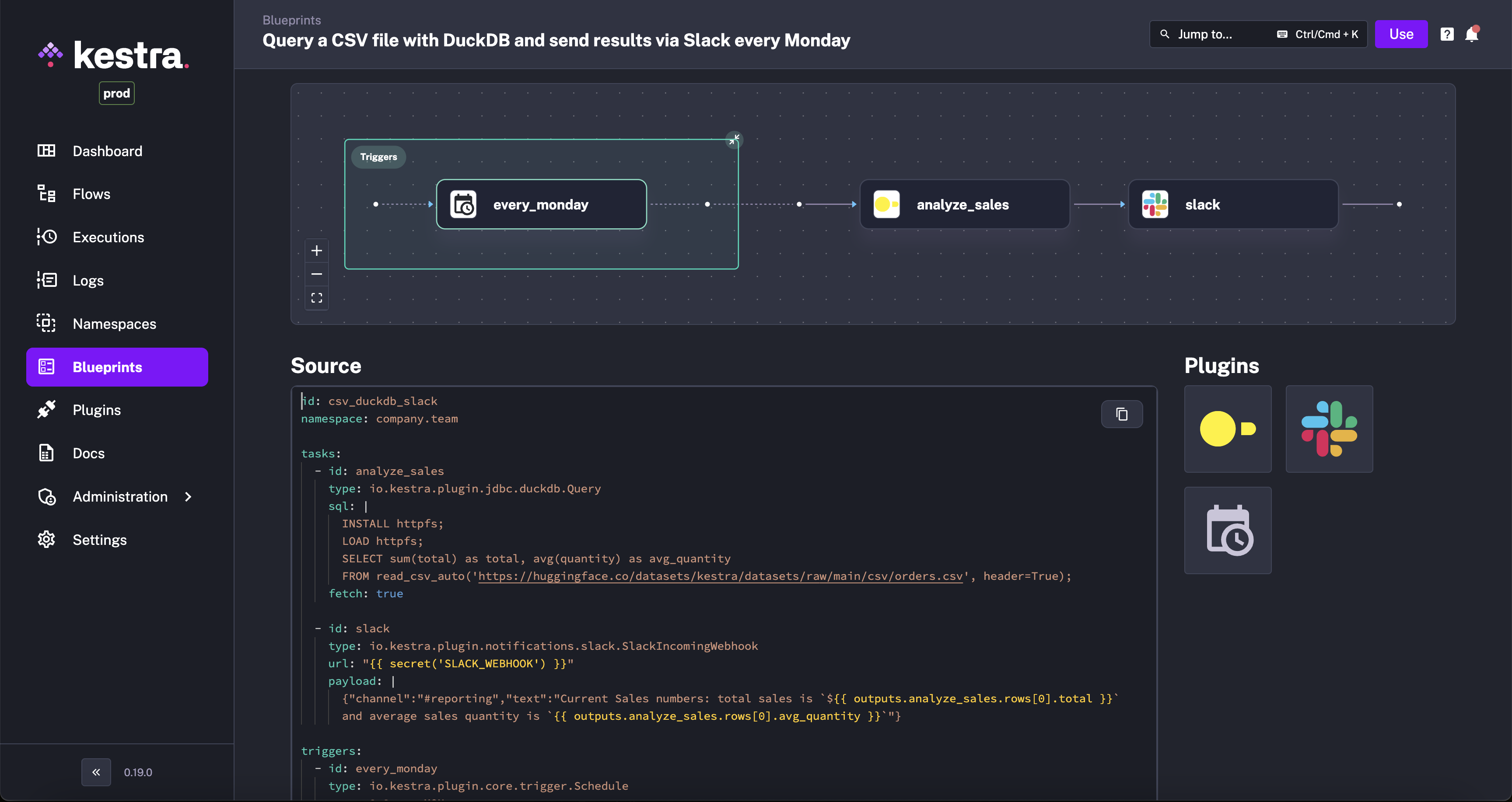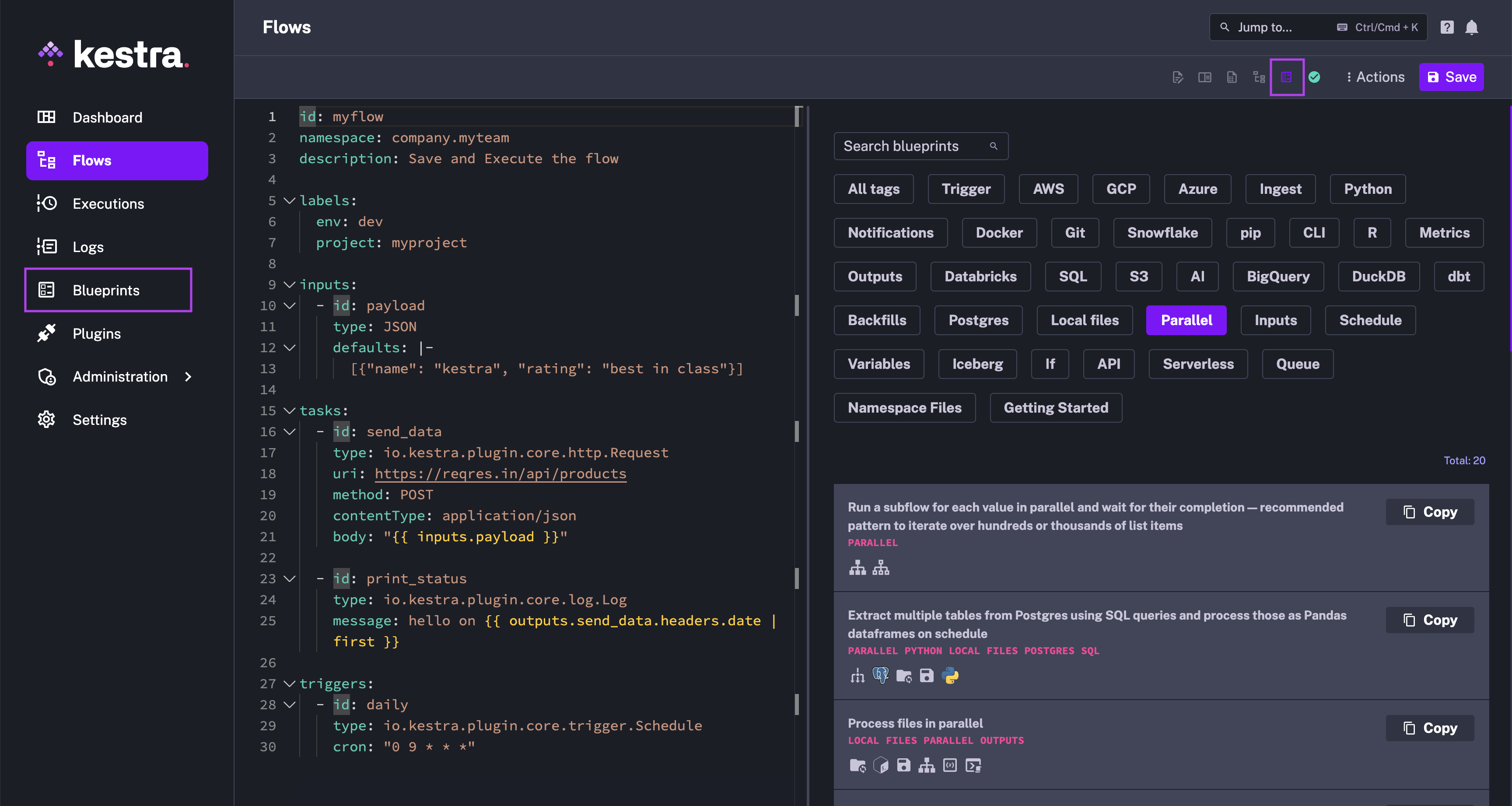 Blueprints in Kestra – Reusable Workflow Templates
Blueprints in Kestra – Reusable Workflow Templates
Available on: >= 0.10.0
Ready-to-use examples designed to kickstart your workflow.
Blueprints – reusable workflow templates
Blueprints are a curated, organized, and searchable catalog of ready-to-use examples designed to help you kickstart your workflow.
Each Blueprint combines code and documentation and can be assigned several tags for organization and discoverability.
All Blueprints are validated and documented. You can easily customize and integrate them into your new or existing flows with a single click on the "Use" button.
To see more, check out the Blueprints library.

Community blueprints
We refer to all Blueprints available in the open-source product as Community Blueprints, as they are guided by the community feedback and represent common usage patterns we see among open-source users and contributors.
Community Blueprints are particularly helpful when you're getting started with a new use case, integration, or with Kestra in general because they reflect fairly standardized workflow patterns. All Blueprints are verified by the Kestra team, but everyone is welcome to contribute new Blueprints or suggest improvements to the existing ones using the following GitHub issue template.
Where to find Blueprints
Blueprints are accessible from two places in the UI:
- The left navigation sidebar
- A dedicated tab in the code editor named "Source and blueprints", showing your source code and Blueprints side by side.

How to find the right Blueprint
Once you are on the Blueprints page, you can:
- Search Blueprints for a specific use case or integration, e.g., Snowflake, BigQuery, DuckDB, Slack, ETL, ELT, Pandas, GPU, Git, Python, Docker, Redis, MongoDB, dbt, Airbyte, Fivetran, etc.
- Filter by one or multiple tags, e.g., filter for Docker to see various ways to run containers in your flow, or filter for Notifications to see several options for configuring alerts on success or failure.
Custom blueprints
This feature requires the Enterprise Edition.
Apart from Community Blueprints, you can create custom Blueprints available only to your organization. You can use them to share, centralize, and document commonly used workflows in your team. Read more in the Custom Blueprints documentation.
Was this page helpful?